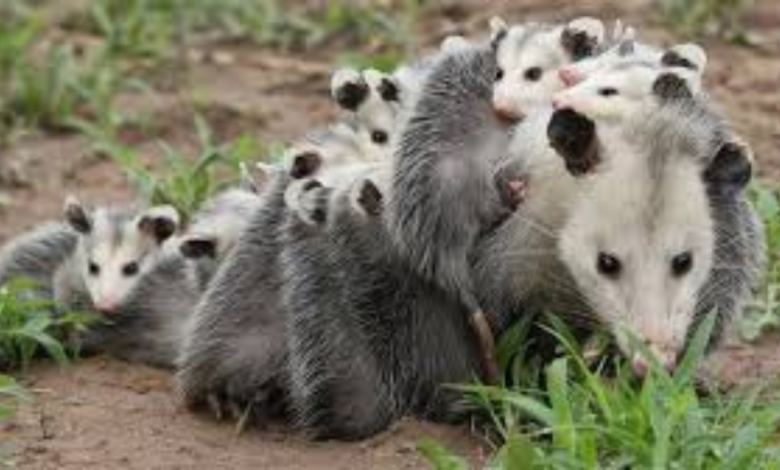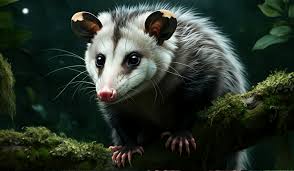Tñacuache: The Secretive Night Dweller of Latin America

The tñacuache—or opossum, as it is commonly known in English—remains one of the most fascinating and misunderstood creatures in Latin America. With its unique combination of nocturnal habits, mysterious behaviors, and key role in local ecosystems, the tñacuache is an animal that often goes unnoticed despite its important ecological contributions. In this article, we will explore the tñacuache’s habitat, lifestyle, diet, behavior, and significance in Latin American culture, shedding light on why this nocturnal marsupial deserves more attention.
What is a Tñacuache?
The tñacuache is a regional term used in various Latin American countries, particularly in Mexico and Central America, to refer to the opossum. The word “tñacuache” is derived from the Nahuatl language, where it was used to describe these nocturnal creatures. As an opossum, it belongs to the Didelphidae family, which includes over 100 species found primarily in the Americas. The most common species of tñacuache found in Latin America is the Didelphis marsupialis, also known as the common opossum.
Tñacuaches are marsupials, meaning they carry and nurse their young in pouches, like kangaroos and koalas. However, unlike many marsupials, they are not strictly limited to Australia; their habitat spans from the southern United States down through Central America and as far as South America.
Habitat of the Tñacuache

The tñacuache is highly adaptable and can thrive in a variety of environments, from dense tropical rainforests to arid scrublands. It can also be found in urban areas, particularly in places where it has access to food sources like garbage or farmed crops. These creatures are excellent climbers and often make their homes in trees, abandoned buildings, or hollow logs, where they seek shelter during the day to sleep.
The tñacuache’s adaptability is one of its most remarkable traits. Despite being primarily a forest-dwelling animal, it has also learned to live in urban environments, scavenging for food in the form of garbage or pet food left outdoors. This ability to coexist with humans in cities and rural areas has made the tñacuache one of the most widespread marsupials in Latin America.
Behavior and Characteristics
The tñacuache is a nocturnal animal, meaning it is most active during the night. This behavior helps it avoid predators and reduce competition for food. Tñacuaches are solitary creatures and do not live in large colonies. Instead, they establish their territories, which they mark with scent markings.
One of the most well-known characteristics of the tñacuache is its unique defense mechanism: playing dead. When threatened, the tñacuache may fall limp, foam at the mouth, and emit a foul odor from its anus, which is designed to mimic the scent of decay. This behavior is known as playing possums, and it serves as a defense strategy to discourage predators. Predators, like coyotes or larger birds of prey, are less likely to attack an animal they perceive as already dead or decaying.
Tñacuaches are also known for their distinctive prehensile tail, which they use as an additional limb for grasping branches or objects. This tail is not only functional for climbing but also helps them stabilize themselves in precarious positions.
Diet of the Tñacuache
Tñacuaches are omnivores, meaning they have a varied diet that includes both plant and animal matter. They are opportunistic feeders and will eat whatever is available. Their diet can consist of fruits, vegetables, small insects, rodents, birds, and even carrion. In urban environments, they are often seen rummaging through trash cans or raiding chicken coops for food.
Their ability to consume a wide range of foods is one reason they have been so successful in adapting to different habitats. In the wild, tñacuaches are especially fond of fruits like mangoes, guavas, and bananas, while in more rural areas, they may feast on small livestock or eggs.
Interestingly, tñacuaches are immune to many of the diseases that affect other animals, including rabies. While they are often associated with the spread of disease in some areas, they are actually less likely to carry rabies compared to other mammals like bats or raccoons. Their immune system plays a crucial role in keeping their population healthy, allowing them to thrive in various environments.
Ecological Role of the Tñacuache
Tñacuaches play a crucial role in their ecosystems. As scavengers, they help to clean up waste and reduce the spread of disease by consuming dead animals and organic material. Their diet also helps control insect populations, particularly those that are harmful to plants.
Additionally, tñacuaches are an important food source for larger predators, such as coyotes, foxes, and birds of prey. In their natural habitats, they serve as prey for larger carnivores, forming part of the complex food web that sustains the environment.
Their ability to adapt to both rural and urban areas also allows them to help control insect populations in cities. This role is particularly beneficial in regions where mosquito-borne diseases, such as dengue fever or malaria, are a concern.
Tñacuache in Latin American Culture
In many Latin American cultures, the tñacuache holds symbolic significance. It is often depicted in folklore and stories as a cunning and resourceful animal. In some indigenous cultures, the tñacuache is considered a trickster figure, using its wits to outsmart predators or other threats. The myth of the tñacuache playing dead to avoid danger has become a part of its legend, with some believing that it is a metaphor for survival against all odds.
The tñacuache is also associated with the concept of resilience. In some rural communities, the animal is seen as a symbol of perseverance due to its ability to survive in difficult conditions. Its ability to adapt to both the wild and urban environments is a reminder of nature’s resilience in the face of change.
Conservation Status of the Tñacuache
Despite their wide distribution and adaptability, the tñacuache is not considered to be at significant risk of extinction. In fact, many species of opossum, including the common tñacuache (Didelphis marsupialis), are classified as “least concern” by the International Union for Conservation of Nature (IUCN). This classification reflects their ability to thrive in various habitats, including human-modified landscapes.
However, local threats, such as habitat destruction, vehicle collisions, and hunting, can affect their populations in specific regions. In urban areas, tñacuaches face the danger of being hit by cars or poisoned by human-made hazards, such as toxic substances in trash or agricultural chemicals.
Conservation efforts that focus on maintaining healthy ecosystems and reducing human-wildlife conflict will help ensure that the tñacuache continues to thrive in the future.
Conclusion
The tñacuache is much more than just a curious, nocturnal creature. Its unique behaviors, adaptability, and important ecological role make it an integral part of Latin America’s biodiversity. Whether it is playing dead to evade predators, climbing trees with ease, or scavenging through urban neighborhoods, the tñacuache has proven to be a resourceful and resilient animal.
By learning more about the tñacuache, we can better appreciate its place in our world and ensure that this fascinating marsupial continues to thrive in the years to come.
Frequently Asked Questions (FAQs)
1. What is a tñacuache?
A tñacuache is a regional term for the opossum, a marsupial found in Latin America. It is known for its nocturnal behavior, prehensile tail, and unique defense mechanism of playing dead when threatened.
2. Where do tñacuaches live?
Tñacuaches are highly adaptable animals that can be found in a variety of habitats, from tropical rainforests to urban environments. They make their homes in trees, hollow logs, abandoned buildings, and other sheltered areas.
3. What do tñacuaches eat?
Tñacuaches are omnivores and have a varied diet that includes fruits, vegetables, insects, small mammals, and even carrion. They are opportunistic feeders and will eat whatever is available.
4. How do tñacuaches defend themselves from predators?
Tñacuaches use a unique defense mechanism known as playing dead. In this mechanism, they fall limp, foam at the mouth, and emit a foul odor to mimic the scent of decay, tricking predators into leaving them alone.
5. Are tñacuaches endangered?
No, tñacuaches are not considered endangered. Most species, including the common opossum (Didelphis marsupialis), are classified as “least concern” by the IUCN. However, they do face local threats like habitat destruction and vehicle collisions.
You May Also Read: https://bigbestwire.com/sparkspitter-candle/